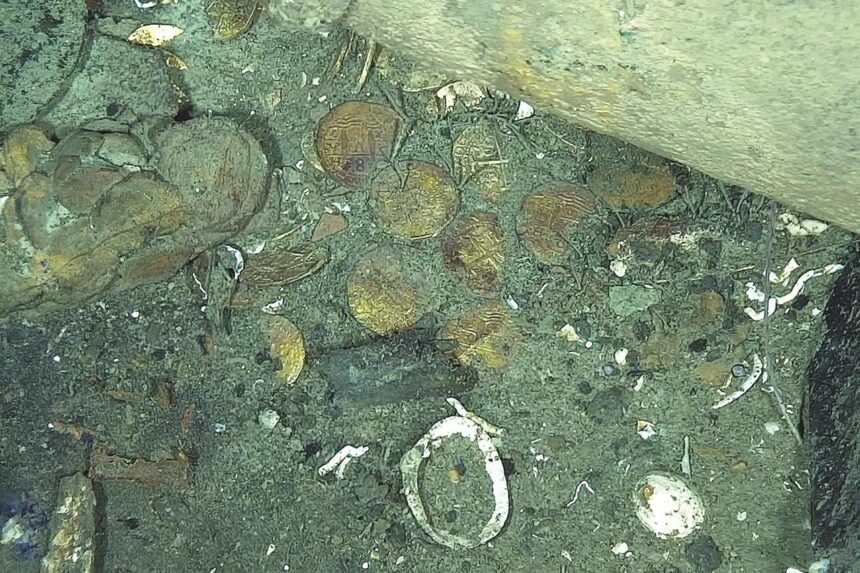Remarkable Discoveries of Gold Coins from the San Jose Shipwreck
More than 300 years after a renowned Spanish galleon sank off the Colombian coast, researchers have made significant advancements in understanding the treasure it carried. The legendary San Jose, hailed as the “holy grail” of shipwrecks, went down in 1708 during a confrontation with the British navy near Cartagena. The calamity resulted in the loss of numerous lives, as around 600 crew members perished with the ship, believed to be laden with gold, silver, gemstones, and other invaluable artifacts worth billions today.
Recent Findings on Gold Coins
In a recent study published in the journal Antiquity, experts have closely examined the intricately designed gold coins discovered near the wreck. These coins confirmed their origins from the ill-fated San Jose. Each coin showcases elaborate imagery, including castles, lions, and crosses, on one side, while the reverse prominently features the “Crowned Pillars of Hercules” crest set against an ocean wave backdrop.
Research Methodology
A team of researchers, including specialists from the Colombian navy, employed remotely operated vehicles (ROVs) to photograph and analyze the scattered coins situated nearly 2,000 feet beneath the ocean’s surface. While the exact quantity of coins remains uncertain due to the site’s dynamic nature, analysis of high-resolution images revealed that each coin averages 32.5 millimeters in diameter and weighs approximately 27 grams.
Significant Inscriptions
Notable inscriptions identified on several coins include the letters “PVA,” indicating a Latin motto that translates to “Plus Ultra” or “Further Beyond.” This phrase symbolized the expansion of Spanish influence across the Atlantic. Additionally, details such as coin denomination and minting year (1707) were discernible from the high-resolution imagery.
The Historical Context
During this period, coins were typically created from gold or silver ingots, with irregularly shaped currency known as cobs serving as the primary medium of exchange throughout the Americas for over 200 years. An example from 1707 showcases a well-preserved 8-escudos cob that illustrates the craftsmanship prevalent at the time.
A Treasured Site
In August 2024, Colombian authorities utilized a ROV to survey the shipwreck further, uncovering numerous artifacts, including anchors, jugs, and glass bottles. Following the discovery of the ship in 2015, the Colombian government decided to commence extraction operations from the wreck site, employing various ROVs.
Contentions Over Ownership
The San Jose wreck has been a focal point of legal disputes, with multiple parties asserting claims. Colombia, Spain, and Indigenous Qhara Qhara Bolivians each argue for rights to the treasure, while U.S.-based salvage company Sea Search Armada maintains it first located the wreck over four decades ago. Historically, the cause of the ship’s sinking remains contested; British records assert it did not explode, contrasting with Spanish accounts which suggest it was detonated during the battle.
Lastly, Recognition of Heritage
In May 2024, Colombia officially designated the shipwreck site as a “protected archaeological area,” emphasizing the significance of preserving the artifacts and history associated with the vessel. The diverse finds provide a glimpse into the daily life aboard the San Jose, with relics scattered amid treasure, artillery, and cargo items.
Summary Table of San Jose Shipwreck Coins
| Feature | Details |
|---|---|
| Diameter | 32.5 mm |
| Weight | 27 grams |
| Minting Year | 1707 |
| Inscriptions | “Plus Ultra” (PVA) |
| Historical Significance | Currency in Americas for over 200 years |




